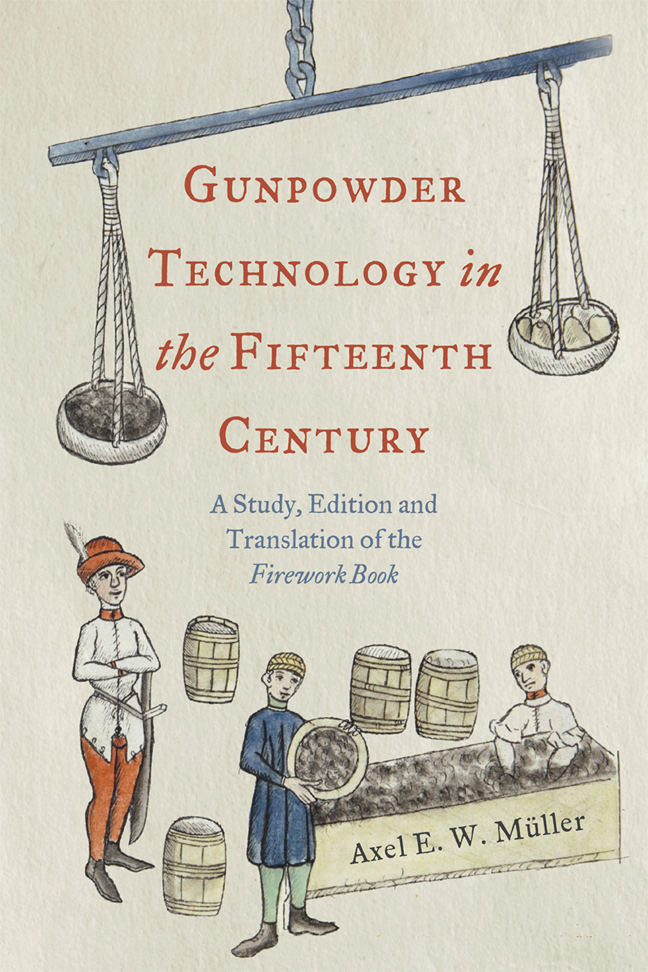 Gunpowder Technology in the Fifteenth Century
Gunpowder Technology in the Fifteenth Century 3 - The Leeds Firework Book
Published online by Cambridge University Press: 21 February 2024
Summary
Having discussed the ownership of this and other Firework Books, and their possible use, we will now focus on the physical characteristics, structure, and content of Royal Armouries manuscript I.34, in order to place it among other manuscripts of this genre. It is clear that I.34 is a highly distinct manuscript but serves as an ideal platform to explore some of the issues shared by many of the others.
Codicology and Palaeography
I.34 is described in the Armouries’ catalogue as a ‘“Firework Book”, an illumi-nated manuscript showing the manufacture and use of gunpowder’.
The catalogue gives the date as ‘mid-fifteenth century’, and suggests that the geographic range is ‘South German’. The entry is limited to four pages, in which the content of the text is scarcely mentioned. Instead, the main focus of the catalogue entry is on individual descriptions of the illustrations.
In 1996, Sarah Barter Bailey, at that time librarian of the Royal Armouries, produced the first scholarly article to address I.34 directly, but – similar to the catalogue entry which is also accredited to her – she devoted only five pages to the text, concentrating mainly on its physical characteristics, with the main focus of her article being her interpretation of the illustrations, dismissing the text as a ‘version of the standard Firework Book text’.
In total, the manuscript contains 140 folios, in 12 gatherings, each of six sheets folded in half, numbered straight through at the top of each page from fol. i to fol. cxliii, the front flyleaf being unnumbered. Barter Bailey states that ‘ leaves, which should have been numbered lxxxxvij, lxxxviij, cvj and cxlj were torn out after the foliation was inserted’, as described in the catalogue. The paper has two different watermarks. The removal of single leaves and the two different watermarks could indicate that this was not a particularly high-status book. It could have been ruled and numbered close to the time of its production, using up already produced paper in a maker's workshop. This situation could also explain the removal of the leaves, cutting out single pages either because they were of poor quality, or because they were needed for other purposes. There is certainly no evidence that any of the text is missing; none of the prior folios are cut off in mid-sentence.
- Type
- Chapter
- Information
- Gunpowder Technology in the Fifteenth CenturyA Study, Edition and Translation of the <i>Firework Book</i>, pp. 56 - 79Publisher: Boydell & BrewerPrint publication year: 2024
